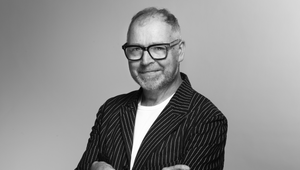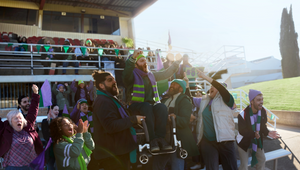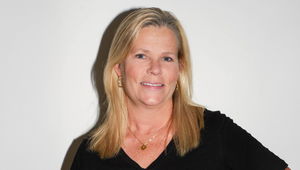
Pride Month Has Been and Gone, but That Doesn’t Mean LGBTQ+ People Have

I must have been about eight years old. I remember sitting in bed with my mother on a cold winter’s day. We were rugged up letting daytime TV roll on, hot beverage in hand, and a little American sitcom by the name of Will & Grace appeared on our screen.
“It’s hilarious,” Mum said. And so we watched, and we laughed – though being younger I didn’t get many of the jokes. But at the same time there was something strange about it. These characters felt so relatable for reasons I didn’t understand. That was the first time I saw LGBTQ+ characters on TV.
21 years later, Western media has made some strides since I was a child. Shows like Modern Family, Sense8, and Orange is the New Black pushed to normalise LGBTQ+ individuals and brought their stories to the general public in the modern era. In fact, in 2021, the media monitoring organisation GLAAD reported that 9.1% of all series regulars on primetime television were LGBTQ+ characters.
And yet, in advertising, visibility has fallen by the wayside. A 2020 study by the Geena Davis Institute on Gender in Media found only 1.8% of characters in ads in the Cannes Lions festival were LGBTQ+, down by 1% from the previous year.
This statistic may feel disjointed in our current climate. For this year’s month of Pride, we saw our newsfeeds plastered with rainbows. Brands changed their logos to stand with the community, and corporations released a near constant stream of talking heads from their LGBTQ+ employees. But for the rest of the year, in the world of advertising, we’re rarely seen.
As advertisers, we have the power to shape culture, and authentic representations of LGBTQ+ people all year round are essential to progress. Stereotypes and typecasting can have a lasting impact on society, creating unrealistic, and often negative, expectations and assumptions. For a social minority, to be accurately reflected in media is a powerful reminder that your experience and your story is just as valid as anyone else’s in a society that is constantly saying otherwise.
But accurate representation doesn’t have to come at the cost of engaging content.
In fact, giving minorities a platform to tell their stories can present fresh and unique creative. The Starbucks campaign “Every Name’s a Story” won the Channel 4 Diversity Award with its commercial following a young trans man having his name written on the side of his order. It’s an emotionally charged tale that brings to light the power of recognition in a world that constantly dismisses identity.
Procter & Gamble tapped into the insight that 60% of people change their hair when they come out of the closet, which inspired a campaign for haircare brand Pantene. The ad features a young trans girl telling her story, noting that hair is one of the biggest ways that people present who they are to the world.
But just as Will & Grace proved to a wider audience that TV shows with gay characters can engage with mainstream topics, not every ad featuring LGBTQ+ characters needs to be exclusively about queer issues.
The Lynx campaign “Find Your Magic” empowers queerness as a strength, integrating the concept seamlessly alongside other traits of individuality. On the other hand, Medibank’s “Live Better” campaign nonchalantly features a middle-aged gay man as the star, with his partner generally disapproving of his music taste. Simple inclusions such as these help to normalise queer individuals within society, whether it’s through sheer empowerment alongside others, or as a simple reminder that minorities can go through many of the same day-to-day tribulations as their mainstream peers.
This year, copywriter Claire Herselman and I were given the opportunity to create a 15 second commercial for KFC. Released in June as part of the brand’s long-standing “Shut Up and Take My Money” campaign, “What a Drag” became KFC’s first ever TV ad to feature a drag queen as the protagonist. The commercial stars a real drag queen known as Hannah Conda, features LGBTQ+ extras, includes music by the iconic RuPaul, and was written by LGBTQ+ creatives.
The story follows our drag queen as she comically contends with a boozed-up hen’s party, before ultimately chowing down on fried chicken to a sassy and empowering drag anthem. It’s light-hearted, humorous and fun, but also a very real scenario that anyone who has frequented a gay bar can relate to.
As June 2021 has now come to an end, many companies have taken down their decorations. Logos have been stripped of temporary rainbows and reverted to usual palettes that adhere to brand guidelines. But just because Pride has been and gone, that doesn’t mean the queer community has.
By giving LGBTQ+ people a chance to be seen in culture all year round, we as advertisers can help to normalise them and their stories to create a safer and more inclusive world. And if we can remind that young person, watching TV with a parent on a cold winter’s day, that they deserve a place in society despite their difference, even for just 15 seconds, that is far more powerful than a Cannes Lion ever could be.















